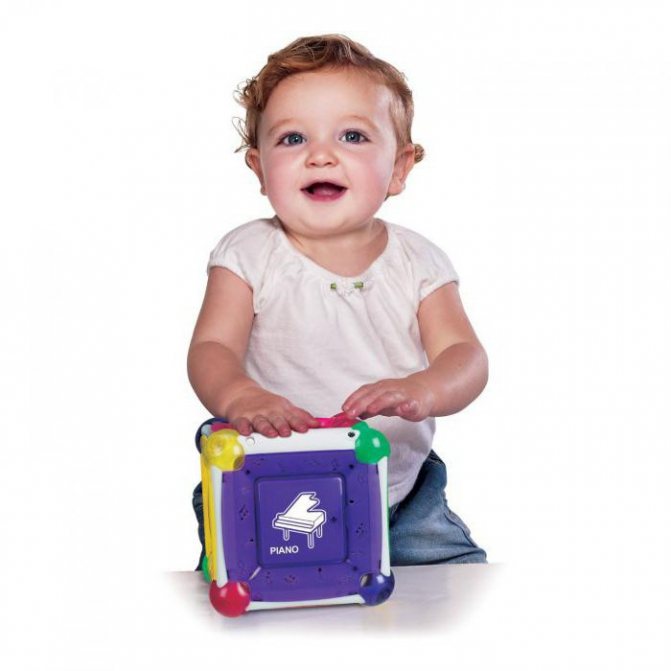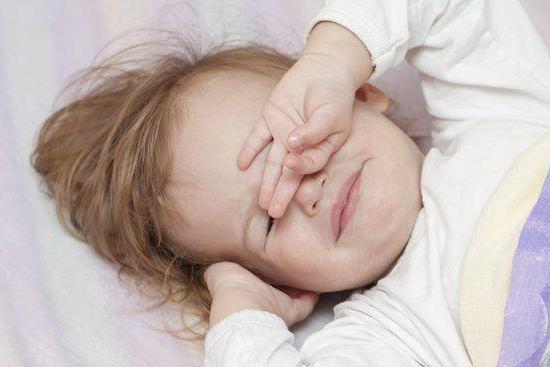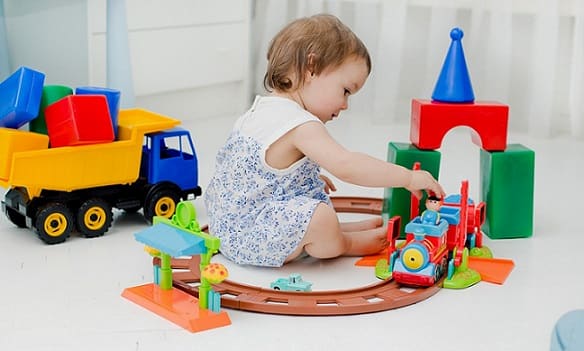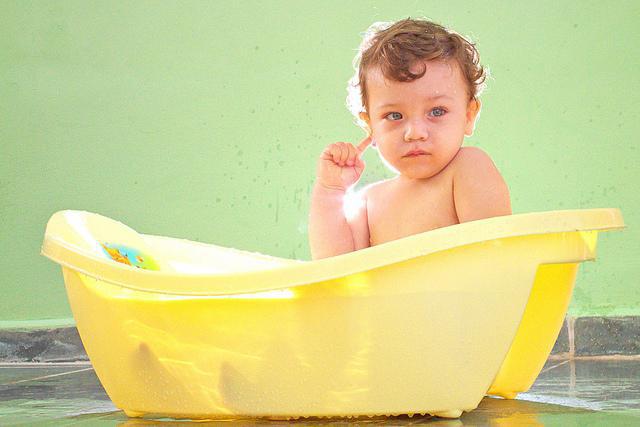How much should a 1 year old baby sleep? All parents ponder this question. It becomes especially relevant when the time comes to send your child to a preschool institution. It's no secret that children need an age-appropriate daily routine. And it doesn’t matter how old the child is: six months, a year, five, seven or ten years. Particular attention should be paid to sleep, since its lack has a negative impact on the emotional state of the child, making him irritable, capricious, and aggressive.
A little about the importance of daily routine
Children aged 1 year need special attention because every day is filled with discoveries. It is also important that in less than a year most of them will go to kindergarten. This means it’s time to start working on getting used to a new way of life. Having set out to find out how much sleep a 1-year-old child should sleep, young parents study information on the Internet and consult with friends and relatives. There are often situations when data obtained from different sources contradict each other. And then the parents are faced with the question, what should be the daily routine of a one-year-old child?
It is important to understand that any daily routine is approximate. When compiling it, you should take into account not only the recommendations of doctors and psychologists, but also the individual characteristics of the baby. However, parents should be careful not to change their usual way of life suddenly, since a child at such a young age cannot adapt quickly. Sudden changes can be a source of stress, so changes should be made gradually.
Basic Rules
When answering the question of how much sleep a 1-year-old child should sleep, most experts agree that a total of 12-13 hours should be spent on this process. You should spend 8-10 hours sleeping at night, and the rest of the time during the day. When creating a daily routine for your child, it is important to adhere not only to these recommendations, but also to a few simple rules.

- Firstly, you should get up at the same time in the morning. The mother’s desire to lie down for an extra hour can have a negative impact on the baby, who will instantly sense the mother’s mood and react accordingly.
- Secondly, the beginning of a new day should become a ritual for the baby. You should teach him how to wash, get dressed and do exercises in a playful way. The process can be accompanied by thematic poems and songs.
- Thirdly, you should strictly adhere to the chosen meal time. You shouldn’t give in and let your baby chew something constantly throughout the day. In kindergarten he will not have this opportunity.
- Fourthly, walks should be daily. One in the morning, the second after afternoon tea. If the weather is not conducive to walking, then you can go out onto the balcony and watch with your child how it rains or snows.
- Fifthly, night sleep should be preceded by certain rituals. You should teach your baby to clean up his toys, and before bedtime the whole family can read a fairy tale and sing a lullaby. This will allow the baby to calm down and tune in to the coming sleep.
1 year old baby's night sleep

Indeed, at this age he may often wake up at night. As we discussed above, the reason for this is overstimulation during the day or the lack of what he fell asleep with: rocking, a bottle, a pacifier or music. Most often, if you exclude these moments from your lifestyle, then restless rest will not bother you in the future. However, there is another unpleasant moment associated with sleep. When a child turns 1 year old, he becomes quite old and independent. Now, if he wakes up and does not find you nearby, he may decide to go in search of you, trying to climb over the railing of the crib. As you yourself understand, such tricks are quite dangerous for children.
Therefore, you can take a number of measures to keep your baby safe. To do this you need:
- Lower the mattress lower. In this case, it will be much more difficult for your little one to climb the wall of the crib. And at 1 year old he is unlikely to be able to overcome an obstacle of such height.
- Remove all toys and pillows from inside. Your little one can use them as steps to get to the top.
- Follow him during the day. Stand in a place so that you can control the baby's actions, but at the same time, he cannot see you. As soon as you see that he has begun to climb up the wall of the crib, immediately approach him and calmly but confidently explain that he cannot do this. He may not remember this rule the first time, but after the second or third ban he will stop doing this.
- Even if the baby wakes up in the middle of the night and asks you to play with him, or walk around, or do something else, do not agree. Put the baby to bed and talk to him for a short time, try to explain that now is time for rest and everyone around him has gone to bed, including all his toys. He must get used to it and know for sure that night time is for sleep, and it cannot be any other way.
Daily routine for a 1 year old child in the morning
It is better to wake up a one-year-old baby between 6:30 and 7:00. At the same time, it is worth paying attention to the habits of other children, if there are any in the family.

Breakfast should be scheduled between 7:30 and 8:00. Before the first meal, the child will have half an hour to wash and do exercises. When choosing food for breakfast, you should give preference to cottage cheese, porridge, and omelet. These dishes will not only satisfy the child, but will also give the necessary boost of energy in the morning.
Your child should be given several hours to play independently. It is advisable to organize a second breakfast at 10:00–10:30. An apple, banana or some other fruit, juice, yogurt - the choice of product depends on the baby’s preferences. This meal should not be neglected, because the digestive system of a one-year-old child is still imperfect, and therefore prolonged fasting will not bring him any benefit.
Between 11:00 and 12:00 it is best to go for a walk. Outdoor games will ensure a good appetite during lunch and a sound midday sleep.
1 year old child's daily routine

The first birthday is an important date that entails changes in diet, occupation, and amount of physical activity. In order for the baby to grow and develop properly, he must be accustomed to a certain routine. A 1-year-old child’s daily routine must be selected individually, taking into account his level of development and body biorhythms.
- Optimal daily routine
- Sleeping mode
- Main activities
Optimal daily routine
The routine accustoms the child to organization, which he will not do without in later life, and facilitates the process of falling asleep, eating and learning new information.
He helps parents structure their day in such a way as to pay attention to both the baby and household chores.
The daily routine depends on how busy you are, how you feel, and your plans for the day.
Dr. Komarovsky offers parents the following approximate daily routine for a 1-year-old child.
| Time interval | Routine |
| 7:30-9:00 | Waking up and hygiene procedures. By 9 o'clock he should begin to be awake. He washes himself and does morning exercises. At this time, it is appropriate to breastfeed or formula feed him. |
| 10:00-11:00 | Eating. They eat porridge, mashed potatoes, soups. |
| 11:00-12:30 | First nap episode. Helps the child digest food and gain strength before walking and playing. |
| 12:30-14:00 | Walking and playing outdoors. |
| 14:00-14:30 | Afternoon snack. |
| 14:30-16:00 | Time for educational games. You can offer to draw, make figures from plasticine, listen to stories from children's books. |
| 16:00-17:30 | Second nap (if necessary) |
| 17:30-18:00 | Dinner. |
| 18:00-19:00 | Games with physical activity. |
| 19:00-20:00 | Walk. |
| 20:00-20:30 | Dinner. |
| 20:30-22:30 | Preparation for sleep. At this time, you can perform water treatments, massage, read books. Games should be calm and sedentary to facilitate the process of falling asleep. |
| 22:30-7:30 | Night sleep. |
Parents do not have to carefully adhere to the regimen given in the table.
Under some circumstances, the usual daily routine may change: for example, when going to the clinic or visiting.
For example, if the weather is rainy, cold, or too hot, you can reduce or eliminate the time you spend walking and dedicate that time to playing indoors.
Useful tips for mothers: CHILD UNDER 3 YEARS OLD
It is also important to adjust this schedule to the kindergarten or nursery in which the adults are going to enroll the child.
To do this, you should find out the routine in the institution in advance, so as not to traumatize the psyche with the new environment and unusual regime.
Sleeping mode
Most often, one-year-old children sleep twice a day - after breakfast and after active daytime games.
They switch to single naps only at 18-19 months.
However, some babies have a stronger nervous system at an early age and do not want to fall asleep a second time in a day.
In this case, you should not force them - this means that the body simply does not need additional rest.
It is enough to make adjustments to the regime and allocate more time for daytime rest.
Twice daily nap
This type of rest is normal practice for children up to the age of one and a half years.
It includes three main phases of sleep - night sleep, which lasts 10-12 hours, and daytime sleep, divided into hourly segments.
The child is put to bed after eating or active physical activity, depending on his preferences.
Night rest starts late - at 22:00-22:30. Often the baby falls asleep at the same time as the parents.
One day nap
You can turn to this option for daytime rest if there are a combination of the following symptoms:
• the child does not look tired and shows a desire to move and play, although the time for the first sleep has already come;
• when trying to put him to bed, he resists, cries, screams;
• the time to fall asleep takes up most of the time allotted for sleep, and sometimes the baby does not fall asleep at all.
In this case, you need to gradually push back the time for rest and lengthen it. If the phases of sleep twice a day last 1-1.5 hours each, then now it’s worth extending it to 4-5 hours.
In addition, night sleep begins earlier - at 21:00-21:30. This regime is more “adult” and prepares the child for entering kindergarten and school.
In addition, it is more convenient for parents, since after falling asleep they have time for each other or for themselves.
Main activities
Your baby's daily routine consists of four main components - feeding, bathing, playing and exercise.
The correct distribution of activities will allow you to adapt to the schedule and ensure normal development.
Eating
The number of meals depends on the child's sleep patterns and preferences.
With a two-day rest, five meals a day are practiced - breakfast, afternoon snack, light snack after the first sleep, lunch and dinner.
In the case of one-nap, parents most often eliminate the snack and switch to a four-time feeding schedule.
At the age of 12 months, the diet should be varied.
It must include vegetable, fruit, meat and fish purees and milk porridges. A small amount of oil is added to them.
You can also give rye bread, cottage cheese, kefir. As dessert they give fruit juices, cookies, crackers.
You should refrain from baking, sweets, cakes, citrus fruits, as well as fried and spicy foods.
Physical training
For proper growth and development, the baby must receive physical activity every day. These should be outdoor and indoor games, gymnastics, and exercises.
The set of exercises should include squats, bending, throwing and catching a ball, running, jumping.
The child must acquire the skills of walking on uneven surfaces, going up and down stairs, and getting down from tall pieces of furniture.
All activities must be supervised by adults.
It is also important to train your endurance with long walks. The pace of walking should be leisurely, and the distance should increase slightly every day.
At the same time, you should not tire him too much - this type of activity should evoke positive emotions.
The total duration of physical exercise per day should be 3-4 hours.
Hygiene procedures
Children have different attitudes towards these procedures: some treat them as a game, others are afraid of noise and splashes of water, temperature changes or soap getting into their eyes.
In the second case, bathing takes a long time and disrupts the general routine.
If your baby doesn't like being in the bath, you can wash him in a basin.
The water temperature should correspond to body temperature; As it cools, it needs to be stabilized. To prevent shampoo and gel from stinging your eyes, you should purchase special children's products.
They do not cause irritation. It is better not to wash your face with soap, but to wipe it with a damp cloth.
To brighten up an unpleasant procedure, attention needs to be switched to toys or mom’s voice.
For those who enjoy bathing, you can add essential oils, salts, and medicinal herbs to the bath.
After washing, you can pour cool water over them: this helps harden them.
Educational games
Toys should develop attentiveness, observation, and fine motor skills.
There must be cubes made of different materials, drawers with slots for figures that need to be inserted, and collapsible pyramids.
Large puzzles, children's lotto, textured rugs, and rubber figurines in the shape of animals will come in handy.
Brain activity is well stimulated by sound toys that imitate musical instruments.
The child must remember the relationship between the key and the sound and be able to reproduce them.
Parents must participate in the game, set an example, and arouse interest.
A daily routine is important for children, as it teaches them to be organized and simplifies the process of falling asleep and eating. In addition, it allows parents to allocate time for household chores.
A 1-year-old child’s daily routine should be flexible and adapt to the temperament, well-being and personal preferences of both the baby and adults.
- about the author
- Recent publications
Tatiana Vasilyeva
author of the publication (site editor)
NURSE Mother of two daughters and grandmother of wonderful grandchildren.
Tatyana Vasilyeva recently published (see all)
- Artificial feeding of a child at 5 months - 08/01/2019
- When does colic begin in a newborn - 06/01/2019
- Frequent regurgitation in infants - 05/21/2019
Afternoon routine
Lunch should be planned for 12:30.
The period from 12:30 to 15:00 is rest time. A 1-year-old child's sleep should be approximately two and a half to three hours.

Between 15:00 and 15:30 the child should have an afternoon snack. After the next meal, it’s time for games.
16:30–17:30 – evening walk.
At 18:00 the child should be given dinner. After that it's game time. It is advisable to give preference to activities that will calm the baby after an active day and set him up for the coming sleep.
From 20:00, preparation for bed begins: washing, changing clothes, reading bedtime stories.

You should go to bed at 21:00. There is no need to put off bedtime and try to adjust the child’s sleep schedule to the parents’ habits. A 1-year-old child's daily routine suggests that the baby should sleep at least 8 hours at night. Otherwise, he will not be able to get enough sleep and the next day he will be moody and excitable.
Daily routine for a child from 1 year to 1.5 years
Features of the age period
In the second year of life, significant changes occur in the baby's development. In the first half of the year, children are still physically quite weak and get tired quickly. High motor activity is combined with insufficient coordination of movements. A child at this age walks, squats and bends independently. Able to fulfill simple requests from an adult, correctly names 4-6 objects when shown to him. Begins to actively use lightweight words, while the vocabulary quickly expands. He begins to use a spoon independently, but does not do it skillfully yet.
Dream
The child sleeps twice during the day: the first nap is 2-2.5 hours, the second is 1.5-2 hours. Preparing the child (stopping noisy games, washing) for bed occurs in advance, at least half an hour before he is put to bed. They should be put to bed during the day and at night at the same hour - children develop a conditioned reflex to time and in the following days the child wakes up and falls asleep at the time set according to the schedule. When accustoming a child to a routine, you need to wake him up; if he does not wake up at the appointed time, a deviation from the exact time of 15-20 minutes is allowed. In the future, when the routine has already been established, it is undesirable to wake the child, as this worsens his mood; the baby should be raised after sleep as he wakes up, and taught to dress by showing and naming items of clothing.
In the summer, it is recommended that the child nap during the day in the fresh air - on the street or on the veranda, or, in extreme cases, in a room with an open window. From May to August, the child can be put to bed a little later at night, thus prolonging daytime sleep.
Feeding
Feeding should be four times a day (breakfast, lunch, afternoon snack and dinner), at intervals of 3-4 hours. The regimen is structured in such a way that the baby stays awake after feeding and then sleeps until the next feeding. Such observance of the rules of alternation of processes ensures the optimal state of the child in each age period. After the child gets enough sleep and eats with appetite, he remains calmly and actively awake until the next sleep and better perceives the influences of the surrounding world.
At this age, the child should be taught to use a spoon independently. First he learns to eat thick food with a spoon, then liquid food. The child eats the first two or three spoons on his own, then the adult feeds him with another spoon, without removing the spoon from the child’s hands. At the end of feeding, the baby eats another two or three spoons.
Wakefulness
The duration of periods of wakefulness at this age should not exceed 4 - 4.5 hours. Extending the time of wakefulness or shortening sleep is undesirable; it can lead to overwork of the nervous system and disruption of the child’s behavior.
The waking period mainly includes play, walks and water procedures. The game mainly uses toys that can be pulled (cars, strollers), cubes, various boxes nested inside one another, books with simple bright pictures, animal figures, and pyramids.
It is very important to organize walks in the fresh air twice a day (after lunch and afternoon snack), the duration of one walk is 1.5 hours, in the summer this time can be increased to 2 hours in good weather conditions.
Water treatments before afternoon tea. At this age, general rubdowns can be used. First they wipe the upper limbs, then the lower limbs, chest and back. The initial water temperature is 33-360. Gradually, once every 5 days, the water temperature is reduced by 10 and brought to 240. Water procedures are an important element of hardening, including them in the daily routine is an integral part of healthy upbringing.
Hygienic bathing 2-3 times a week before bedtime.
The child's clothing should be appropriate for his height, not restrict movement, and have a minimum number of ties and fasteners. Up to 1.5 years old, girls, like boys, should wear pants and blouses, since dresses make walking difficult. The child takes part in the process of dressing and undressing, learns to take off simple items of clothing (unbuttoned shoes, a T-shirt).
At this age, it is important to cultivate the following cultural and hygienic skills: wash your hands before eating, sit on a child’s chair, learn to eat yourself carefully with a spoon, and use a napkin after eating. It is necessary to teach the child to sit on the potty and sit on it until the result is achieved. To teach children to be tidy, they are regularly put on the potty after sleep, every 1.5 - 2 hours while awake, before a walk and upon returning from it.
Approximate daily routine for children from 1 to 1.5 years:
Feeding: 7.30, 12, 16.30, 20.
Wakefulness: 7 – 10, 12 – 15.30, 16.30 – 20.30.
Sleep : first 10 – 12, second 15.30 – 16.30, night sleep 20.30 – 7.
Walk : after lunch and afternoon tea.
Bathing: 19.
Organization of daytime sleep
When the baby turns 1 year old, most parents begin to switch him to a single nap during the day. Until this point, many children slept two or three times a day during the daytime. During this period, parents should be patient and not impose a new daily routine, otherwise whims and hysterics are guaranteed. If it is difficult for the baby to fall asleep alone, then the mother can lie down next to him. At the same time, it is important to understand that the child should not get used to sleeping with his mother, otherwise he may have difficulties in kindergarten. Don't expect instant results. It is important to understand that it will take more than one day to get used to it.
Preparing for evening sleep
Evening is a time for quiet games. It is better to postpone outdoor games until the morning. It is important for the child to tune in to the upcoming sleep, so it is best to offer the child activities that do not require high physical activity. This could be drawing, modeling, reading books. An evening warm bath is another way to relax after a long day. If the child was weaned relatively recently, and it is still difficult for him not to receive food at night, you can give him a glass of kefir or warm milk before bed.
Let's sum it up
Only parents can decide how much sleep a 1-year-old child should sleep. Not only the recommendations of specialists - psychologists, pediatricians - are important, but also the child’s personality, his habits and character. At the same time, it is important to be critical of the advice of friends and family from whom you find out how much children sleep.

Stories about how the neighbor's boy Vova or girl Lera live will certainly be useful, but only as an example. You cannot transfer the habits and developmental characteristics of one child to another. How the baby lives, what interests him, how he falls asleep, how he wakes up - only the parents have this information. Therefore, it is they who should create the daily routine of a one-year-old child.
How to put a 1-year-old child to sleep?
When parents have decided how many times a child sleeps at 1 year old, the only problem remains proper preparation for rest. It is worth considering that the baby is beginning to grow up, and the approach to him is no longer the same as in infancy.
Before putting your one-year-old baby to bed, pay attention to the following details:
- choose the optimal time so that at least 5 hours have passed since waking up in the morning;
- You can’t suddenly put your baby down if he was actively playing a couple of minutes ago;
- prepare good conditions for relaxation;
- ensure that your baby has only positive associations associated with falling asleep;
- A sharp transition to a one-time daytime nap from a two-time rest is unacceptable.
By following these rules, you can move on to recommendations regarding how to put a one-year-old child to sleep:
- it is necessary to adhere to the drawn up daily schedule;
- you cannot suddenly change your rest hours, even by 20 minutes;
- prevent the baby from dozing during the day;
- pay attention to signs of fatigue, avoiding overwork;
- come up with special rules that need to be repeated before putting the child to bed at 1 year old. You can accustom your baby to a pleasant light massage and back stroking. Before each bedtime, sing soothing, gentle songs, tell continued fairy tales;
- Create a cozy, relaxing atmosphere in the nursery that will make you feel drowsy. In the evening, dim the lighting, and during the day, cover the windows with thick curtains. Before each bedtime, be sure to ventilate your child’s room;
- do not allow emotional instability in the moments before falling asleep;
- Try to take your baby outside a couple of hours before resting.

The listed recommendations are completely simple, and if you follow them daily, you can achieve peaceful sleep and quality sleep.
Parents need to understand that constant lack of sleep for a small family member can lead to various health problems. Therefore, it is worth paying increased attention to such an important period in a child’s life as 24-hour sleep, and wisely fitting it into the daily routine.
Only parents can decide on the amount of time needed for quality rest. And the result largely depends on the individual characteristics and character of the little person.











